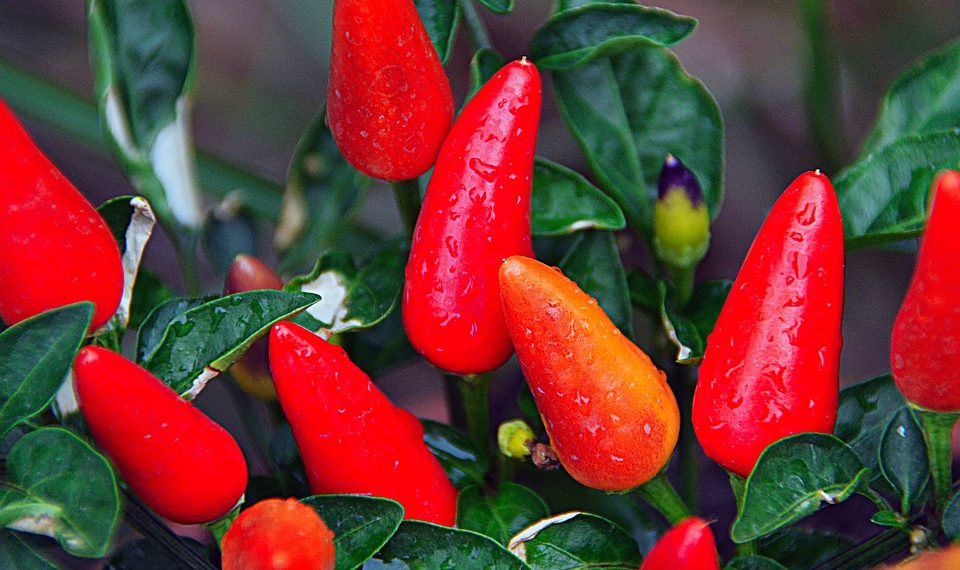Have you ever felt that nagging muscle pain after a workout or a long day at your desk? You’re not alone. Many of us have experienced that discomfort, and finding relief can often feel like searching for a needle in a haystack. But what if I told you that a simple ingredient you might already have in your kitchen could help? Enter hot peppers! These fiery little fruits aren’t just for spicing up your tacos; they can also provide some serious muscle relief when used in compresses. Let’s dive into five hot pepper compress hacks that promise to ease your muscle tension and get you back to feeling like yourself again.
Contents
The Science Behind Hot Peppers and Pain Relief
Before we jump into the hacks, let’s chat briefly about why hot peppers can be effective for muscle relief. The key player here is capsaicin, the compound that gives peppers their heat. Capsaicin works by temporarily reducing the amount of substance P—a neurotransmitter that sends pain signals to your brain. Research has shown that capsaicin can be an effective pain reliever when applied topically (Yoshioka et al., 2010). So, it makes sense to harness this natural pain-relieving property in a compress.
1. Basic Hot Pepper Compress
How to Make It
-
Ingredients:
- 1-2 fresh hot peppers (like jalapeños or cayenne)
- Water
- A clean cloth or towel
-
Instructions:
- Chop the peppers and simmer them in water for about 15-20 minutes.
- Strain the liquid and let it cool slightly.
- Soak the cloth in the pepper-infused water and apply it to the affected area for 15-20 minutes.
Pros and Cons
Pros: Simple, quick, and uses ingredients you likely have at home.
Cons: The heat can be intense, so it’s essential to test a small area of skin first.
2. Hot Pepper and Olive Oil Infusion
How to Make It
-
Ingredients:
- 1-2 hot peppers
- 1 cup of olive oil
-
Instructions:
- Chop the peppers and add them to a small saucepan with olive oil.
- Heat the mixture on low for about 30 minutes, allowing the capsaicin to infuse into the oil.
- Once cooled, strain the oil and store it in a glass jar.
Application
- Rub a small amount of the infused oil onto sore muscles and cover with a warm towel for added relaxation.
Pros and Cons
Pros: The oil can be used for a longer period, providing ongoing relief.
Cons: It may leave an oily residue, and the strong smell of peppers can be off-putting.
3. Hot Pepper and Epsom Salt Bath
How to Make It
-
Ingredients:
- 1-2 hot peppers
- 2 cups of Epsom salt
- A warm bath
-
Instructions:
- Chop the peppers and add them to a warm bath filled with water.
- Dissolve the Epsom salt in the bath and soak for at least 20 minutes.
Pros and Cons
Pros: The combination of warm water and Epsom salt can help relax muscles, while the pepper adds an extra kick.
Cons: Not everyone has a bathtub, and it can be a bit messy.
4. Hot Pepper and Vinegar Compress
How to Make It
-
Ingredients:
- 1-2 hot peppers
- 1 cup of apple cider vinegar
- A clean cloth
-
Instructions:
- Chop the peppers and combine them with vinegar in a jar.
- Let the mixture sit for 24 hours.
- Strain and soak a cloth in the vinegar solution, applying it to the sore area.
Pros and Cons
Pros: Vinegar has its own set of health benefits, including anti-inflammatory properties.
Cons: The smell of vinegar can be quite strong, and some may find it irritating.
5. Hot Pepper Paste
How to Make It
-
Ingredients:
- 1-2 hot peppers
- 1 tablespoon of coconut oil or olive oil
-
Instructions:
- Blend the peppers with the oil until you have a paste.
- Apply a thin layer to the affected area and cover with a bandage or cloth.
Pros and Cons
Pros: Easy to apply and can be stored for later use.
Cons: The paste can be very hot, so start with a small amount to gauge your tolerance.
FAQs
1. How often can I use a hot pepper compress?
You can use a hot pepper compress once or twice a day, but always listen to your body. If irritation occurs, give your skin a break.
2. Are there any risks associated with using hot peppers for muscle relief?
Yes, the heat can cause skin irritation for some individuals. Always do a patch test before applying it widely.
3. Can I use dried peppers instead of fresh ones?
Absolutely! Dried peppers can still provide capsaicin benefits, just be sure to adjust the infusion time.
4. What if I don’t have hot peppers?
If you don’t have hot peppers on hand, consider using commercially available capsaicin creams, which are often formulated for muscle pain relief.
Conclusion
If you’re looking for a natural way to relieve muscle pain, hot pepper compresses might just be your new best friend. With their potent capsaicin content, these hacks can offer quick relief and are easy to whip up at home. Just remember to start slowly, listen to your body, and enjoy the fiery benefits.
As we embrace natural remedies, it’s crucial to remain informed and cautious. While hot peppers can be effective, they’re not a one-size-fits-all solution. Always consult with a healthcare provider if you have underlying conditions or if pain persists.
So, the next time you’re feeling sore, consider reaching for those peppers in your pantry. They might just pack the punch you need for a speedy recovery!
Disclaimer: This article is for educational purposes only and is not a substitute for professional medical advice. Always consult a qualified healthcare provider before making changes to your health routine.
References
-
Yoshioka, A., Kondo, Y., & Matsuda, H. (2010). Capsaicin and its analogs: potential therapeutic applications. Journal of Clinical Biochemistry and Nutrition, 47(3), 232–236. https://www.ncbi.nlm.nih.gov/pmc/articles/PMC2990638/
-
Mayo Clinic. (2021). Capsaicin: What you should know. https://www.mayoclinic.org/drugs-supplements-capsaicin/art-20363386
-
Cleveland Clinic. (2022). Muscle Pain: Causes, Symptoms, and Treatment. https://my.clevelandclinic.org/health/diseases/14523-muscle-pain
Get Your FREE Natural Health Guide!
Subscribe now and receive our exclusive ebook packed with natural health tips, practical wellness advice, and easy lifestyle changes — delivered straight to your inbox.















